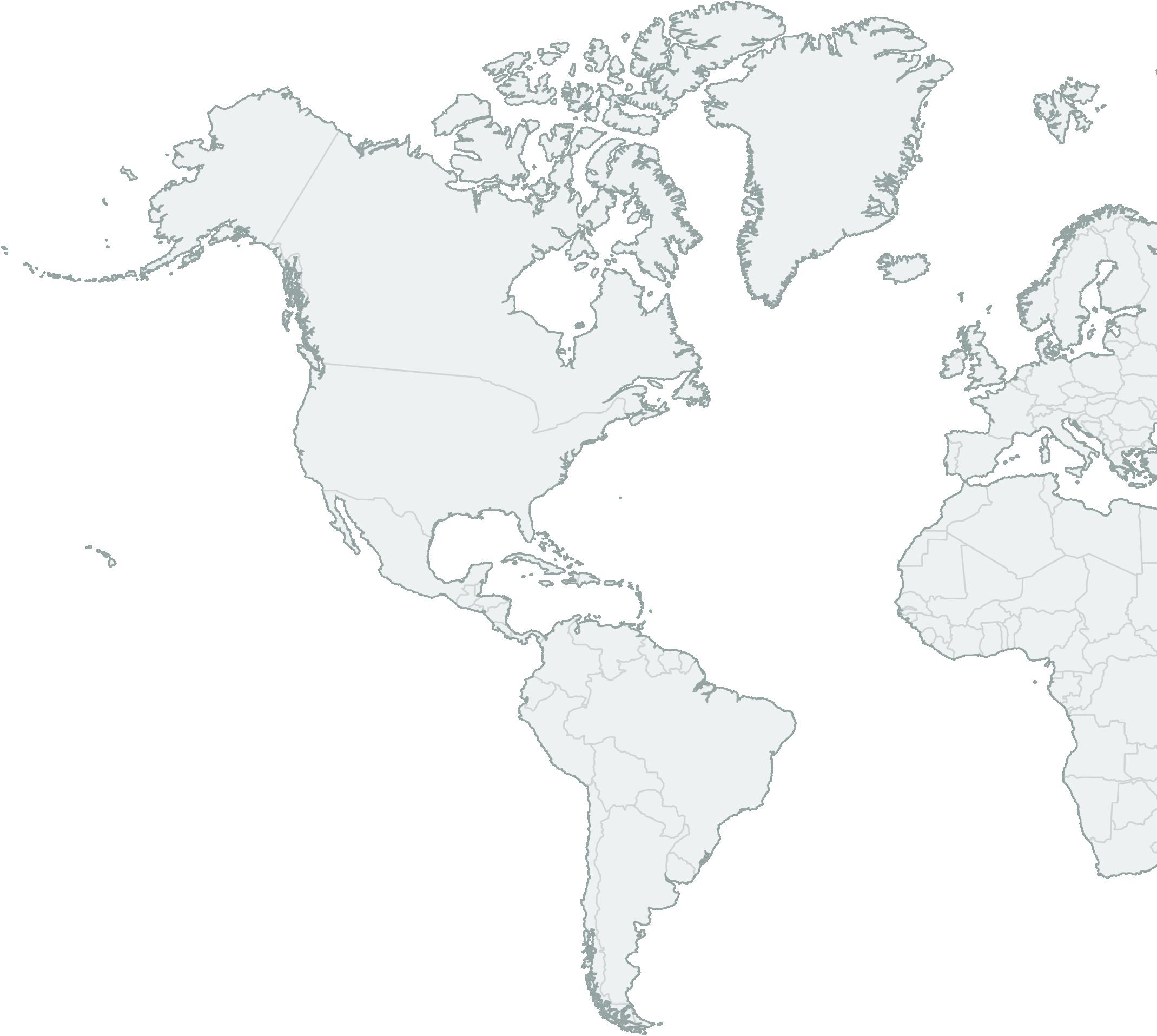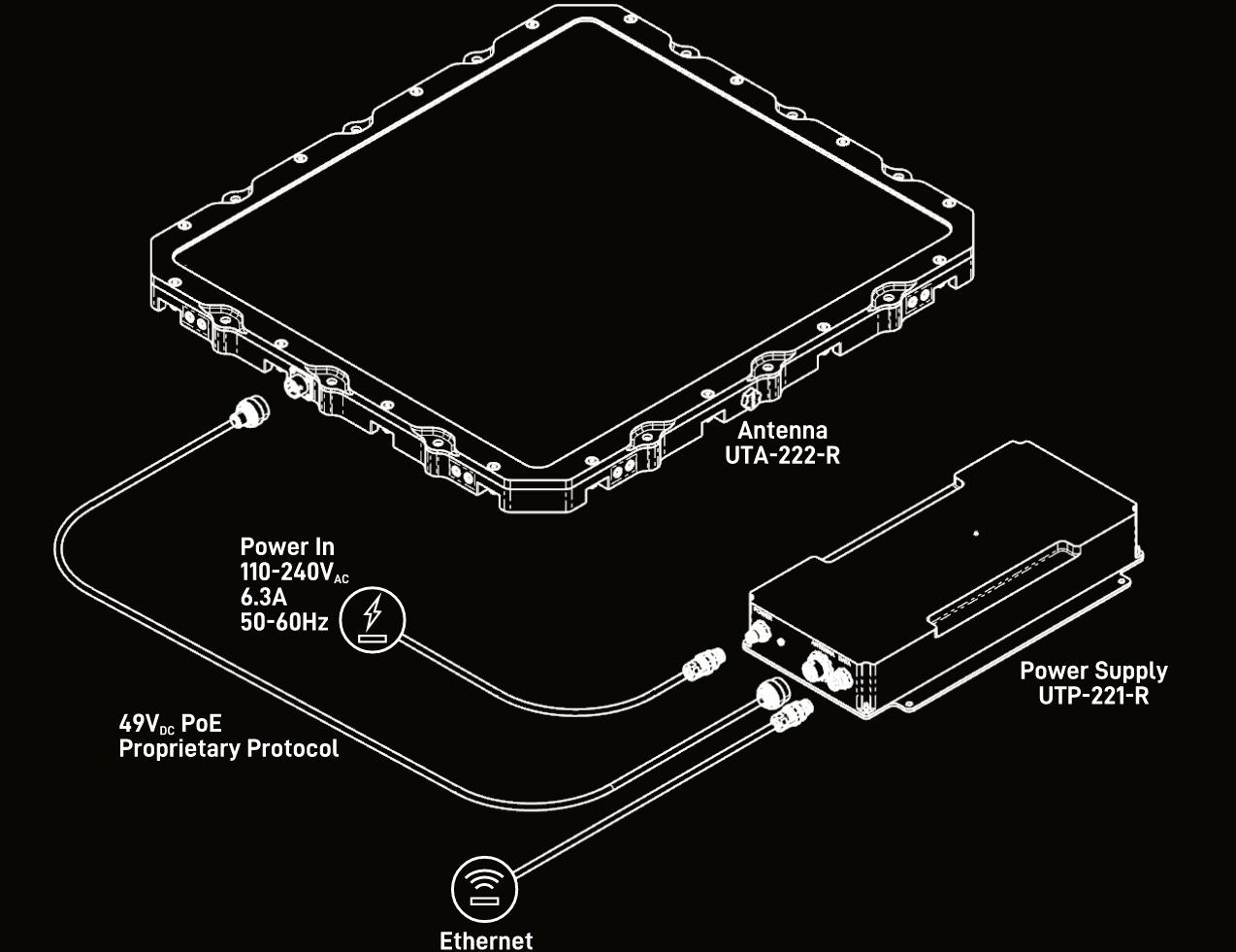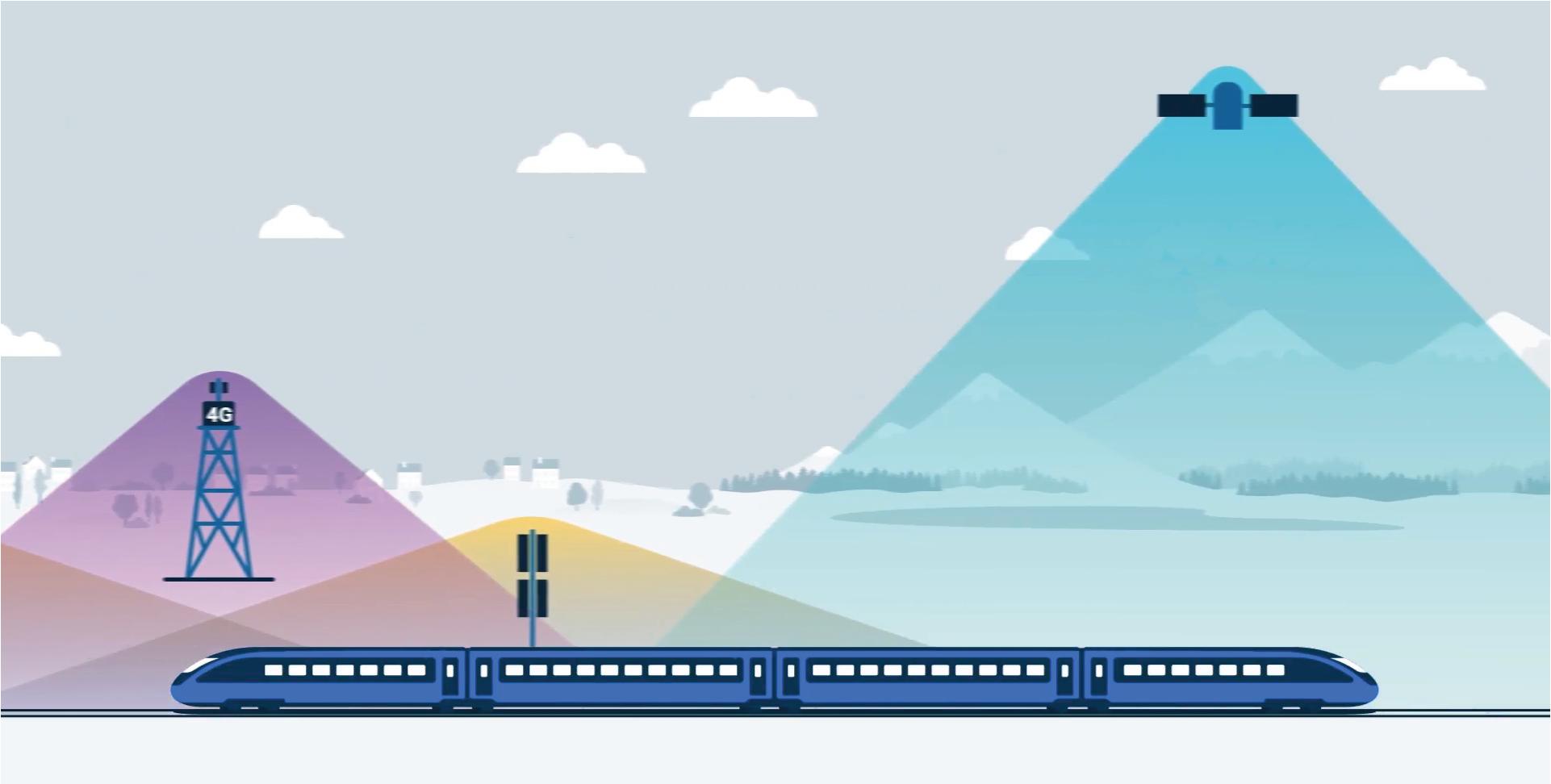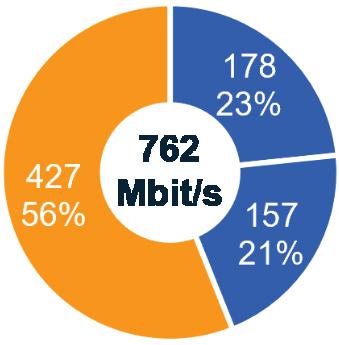

Icomera Satellite Solutions: Overview
As the world’s leading provider of connected solutions for transport, Icomera’s satellite connectivity solution for trains enables transport operators to enhance their onboard connectivity strategy by integrating high-throughput, low-latency Internet.
By combining satellite networks with cellular and trackside networks, operators can deliver seamless passenger Wi-Fi and operational connectivity, even in the most remote and challenging environments.
Key Facts:
• Icomera’s onboard networks aggregate all available communication links simultaneously using Icomera’s SureWAN™ algorithm. This means that all available capacity from multiple terrestrial cellular and multiple satellite networks will be available for use by the onboard network.
• It is simple and cost-effective to add satellite communication to new or existing Icomera installations.
• Attractive data pricing when compared to cellular data and offers additional, scalable capacity and availability along even sparse, rural routes.
• Icomera has active satellite deployments on passenger services in North America and Northern Europe, with freight deployments in Southern Europe.
• Icomera’s satellite solutions are fully supported by its ICONIC network monitoring and configuration tools.
• Icomera is an authorised reseller of Starlink solutions and its dedicated EN 50155-certified rail-tile antenna.
• The Starlink solution offers priority data for in-motion use.
Over 25 Years of Experience
As a pioneer of connected solutions for public transport, Icomera has been actively involved in multiple successful satellite connectivity tests since 2002, across a range of LEO-sat providers, having identified its potential for public transport applications early on. Some of these have included trains in revenue service, while others have been technical trials aimed at pushing the technology to achieve its full potential.

Icomera has conducted more extensive testing of LEO satellite solutions and has installed more on-train deployments than any other provider of transport connectivity solutions.
in Satellite Connectivity Solutions
Today, Icomera has launched active deployments on passenger services in North America and Northern Europe, as well as freight deployments in Southern Europe. Additionally, as a Tier 1 authorised reseller of Starlink solutions for rail, Icomera is bringing the home broadband experience closer to millions of rail passengers accessing onboard Wi-Fi services on the move.

UK: Several hybrid cellular / satellite network trials using Icomera equipment
Northern Europe: Active satellite connectivity deployments on active passenger services
Southern Europe: Satellite connectivity deployment on freight services
North America: Live satellite deployments on active passenger services
The results of our tests to date have been impressive, delivering the equivalent of inner-city 5G capacity to trains in rural environments, with average throughput consistently over 150 megabits per satellite terminal and an average latency of less than 50ms.
Why Starlink?
We see Starlink as the leading source of satellite connectivity today, due to its expansive constellation and SpaceX’s extensive satellite launch capabilities; however, as a leading solution integrator and provider of onboard hybrid networks, we have the capabilities and experience of working with other satellite providers.
Key Facts:
• Over 9,000 satellites launched as of July 2025
• FCC authorization to launch 4,408 Ku-band satellites and 7,500 V-band satellites
• First generation Starlink-network is planned to consist of approx. 12,000 satellites
• 2nd generation Starlink network proposed to contain 29,988 satellites (but this could rise to more than 40,000 according to some sources)
• Subscribers are mass-adopting Starlink services at scale
Sources: FCC; SpaceX, Via Satellite.

The Benefits of Satellite Connectivity for Rail Transport

Satellite adds additional capacity along highly trafficked train routes and only needs a clear view of the sky
Trains moving through sparsely populated and rural areas receive high-bandwidth connectivity with high availability
Contributestomorecompetitivedatapricing inmanyregionsacross the globe
Increases availability & capacity for train-to-ground communications when combined with existing connectivity sources
Improves passenger satisfaction and acts as an enabler for train digitalisation across a wide range of applications
Doesnotrequirelengthy,expensive,land-basedinfrastructurerollouts in order to function
Scalability:Simplyaddmoresatelliteantennasforadditionalcapacity, at schedules tailored to avoid service disruption
Fully uncorrelated with cellular networks, making the combination ofcellular/satelliteperformverywell,withahigh“minimum”experience
THE ONBOARD PLATFORM
The World’s Leading Hybrid Connectivity Solution for Public Transport, Attractively Priced
Cutting-Edge Technology, Purpose-Built for Rail

Peak Performance, Purpose Built for Public Transport
Starlink for rail equipment includes a purpose-built phased-array UTA-222-R antenna and power supply unit (PSU), which are both EN 50155 certified and designed for use on trains.
• Antennas and cables are sourced by Icomera
• Icomera ensures that all hardware is installed and configured according to Starlink’s requirements for operation
• It is simple and cost-effective to add Starlink satellite communication to new or existing Icomera installations
• The Starlink solution is fully supported by Icomera’s ICONIC monitoring and configuration tools
Design & Engineering Services
Tailored to Your Requirements
Icomera offers full end-to-end integration support for all types of trains and ensures that satellite connectivity equipment will be properly installed and configured. Icomera’s Design and Engineering division (DG8) has extensive experience integrating satellite solutions for Icomera and others, and is available to assist with any design work and installation required - all planned according to operators’ schedule requirements to avoid service disruptions.
Cellular Antennas TYPICAL ONBOARD NETWORK ARCHITECTURE Access Point
Note: for maximum performance, the onboard switches need to support 10 Gbps

Icomera Router (10 Gbps)
Starlink Rail-Tile with Mounting Plate
Starlink Power Supply Unit + DC/AC Converter
PoE Switch
Train Switch (10 Gbps)
Digital Train Line
Data Plan & Pricing
High-Bandwidth Satellite Connectivity at Highly Attractive Prices
Icomera’s satellite data plan for rail offers high-capacity network connectivity at highly competitive prices compared to terrestrial cellular mobile networks, along with a host of benefits:

High-speed mobile business price plan with prioritised data & 99.9% network uptime SLA
Flexible price plans which can be upgraded, downgraded, or paused if necessary
Satellite solutions are fully monitored & managed by Icomera
60-day roaming across countries in supported regions (e.g. Europe, North America).
Highly attractive per-GB data pricing vs. cellular and trackside providers
Hybrid Connectivity Solutions For Public Transport
While LEO satellite connectivity solutions provide an impressive level of capacity and availability on their own, aggregating satellite networks with cellular, trackside, and even other satellite networks as part of a “hybrid strategy” improves the overall capacity and reliability of the connectivity being supplied to the vehicle; filling coverage gaps and ensuring a more seamless experience overall.
Invented in 1999 and improved upon ever since, SureWAN™ is one of Icomera’s core proprietary technologies. Specifically designed for use on public transport, SureWAN empowers Icomera’s multi-modem mobile access routers to aggregate all available cellular capacity across multiple cellular modems in parallel, delivering the fastest, most reliable connection possible to the moving vehicle.
Using SureWAN in conjunction with Icomera’s satellite solution for rail, transport operators can aggregate and use all available communication links simultaneously, ensuring that the available capacity from multiple terrestrial cellular and multiple satellite networks is available for use by the onboard network.
The hybrid satellite connectivity solution is very simple and cost-effective to install or scale upOperators can easily add additional satellite antennas to new or existing Icomera installations. Satellite solutions are also fully supported by Icomera’s ICONIC monitoring and configuration tools.



Case Study: Deutsche Bahn
Gigabit Zug 2030
Icomera carried out a pioneering research project, ‘Gigabit Zug 2030’ (“Gigabit Train 2030” / GZ30), with its long-time client and partner, Deutsche Bahn. GZ-30’s principal aim was to develop and test innovative concepts for train-to-ground communications and onboard connectivity for passengers and connected devices on trains.

The GZ-30 trial carried out measurements using DB’s advanced TrainLab (aTL) (“the fastest lab on rails”), using railway lines across Germany as a testbed.
The GZ-30 research project was co-funded by Germany’s Federal Ministry of Transport and Digital Infrastructure (BMDV) through its Innovative Netztechnologien (InnoNT) Programme.
The tests took place on railway lines across Germany, evaluating important parameters such as total network throughput, coverage, latency, and connection stability over the entire route.
Gigabit Zug 2030: Methodology
Icomera and Deutsche Bahn installed 2 satellite antennas onto the vehicle and seamlessly aggregated satellite and cellular communication links using its SureWAN™ algorithm, supporting the hardware using its ICONIC network monitoring software suite.
After several weeks of vehicle modification in preparation for the trial, DB tested the performance of its onboard network under real-life drive-test conditions across the span of 7 weeks and a total of 15,000 km (around 9,320 miles).

Gigabit
The results of the trial were impressive.
Icomera demonstrated consistent availability and high throughput for the duration of the test. An average throughput of 784 Mbit/s was reached, along with a peak of 1.6 Gbit/s, delivering an exceptional level of capacity for onboard devices, systems, and passengers.
With only two satellite antennas installed, their throughput reached an average of 188 Mbit/s and 169 Mbit/s, respectively, accounting for nearly as much throughput as 10 cellular links could manage.
The GZ-30 trial demonstrated that a ‘Gigabit Train’ can become a reality within weeks, rather than years, underscoring the benefits of aggregating multiple technologies to address the challenges of modern rail. The ability to combine disparate sources of connectivity in real-time, even uncorrelated terrestrial and satellite networks, provides a powerful blueprint for digital trains of the future, even far beyond 2030.
DOWNLINK THROUGHPUT
MBIT/S
Aggregation of 10 cellular links
Aggregation of 2 satellite links
PERFORMANCE


Source: Icomera Discovery; Data from ATL 13 September, 2024 08:00-10:33. 1,869 samples.
Note: Data was generated by a test server commissioned by Deutsche Bahn. The throughput numbers are measured by Icomera using its “Discovery” monitoring tool.
Exploring the Frontiers of Connectivity:
Arctic Circle Connectivity Trial
Icomera recently partnered with Sweden’s KTH Royal Institute ofTechnology to test a combination of cellular and Low Earth Orbit (LEO) satellite connectivity in one of the most demanding environments for digital communications: the Arctic Circle. The study assessed how networks perform in remote northern regions, where sparse population density and limited infrastructure mean traditional cellular networks often struggle to provide adequate capacity. These challenges are not unique to Sweden. From Canada and Alaska to northern parts of the United Kingdom and the wider Nordic region, rural rail routes still experience gaps in coverage. With cellular networks alone unable to guarantee consistent performance across rural or isolated routes, LEO satellite solutions such as Starlink have become more than just a compelling possibility, but a virtual certainty.

At the time of testing, the Starlink constellation was less dense across Northern Latitudes. However, there are now far more Starlink satellites in orbit around the northern latitudes since the measurements took place, with the number set to increase even further in the coming months.
Credit: https://satellitemap.space/
Arctic Trial Methodology
Travelling 970km from Umeå to Vilhelmina, the trial used an Icomera X5 router with only a single Starlink Flat High-Performance terminal alongside a commercial 5G setup to measure performance in both urban and remote conditions. With more than 50,000 Starlink and 23,000 cellular observations collected, the study delivered a detailed comparison of network coverage, throughput capacity, and availability in one of the world’s most challenging environments.
The Results
The results of the study highlighted the distinct advantages of combining uncorrelated networks, as well as the solid performance of satellite in sparsely populated regions:
Throughput Performance: Starlink demonstrated a significant advantage in median throughput, delivering speeds nearly ten times higher than the cellular network. This makes it a viable option for bandwidth-intensive applications such as real-time Digital Video Surveillance and highperformance Passenger Wi-Fi.
Connectivity Gaps: It was clear that despite the Arctic Circle being situated outside its main coverage area, Starlink still excelled in overall performance, offering a peak throughput of over 300 Mbit/s. Cellular networks provided more consistent baseline throughput but struggled to match Starlink’s bandwidth capabilities.
The Sky’s No Longer the Limit:
The Implications for Public Transport
Icomera’s demonstrations to date have shown that in real-word transport applications, simultaneously aggregating Starlink with terrestrial networks along the route offers highly improved overall network performance, which translates to more availability and capacity for onboard devices and applications, with fewer interruptions.
Given the attractive pricing of Starlink’s data plan and Icomera’s ability to design, install, and support the solution as part of its existing ecosystem, there has never been a better or easier time to benefit from all that LEO satellite connectivity has to offer.

